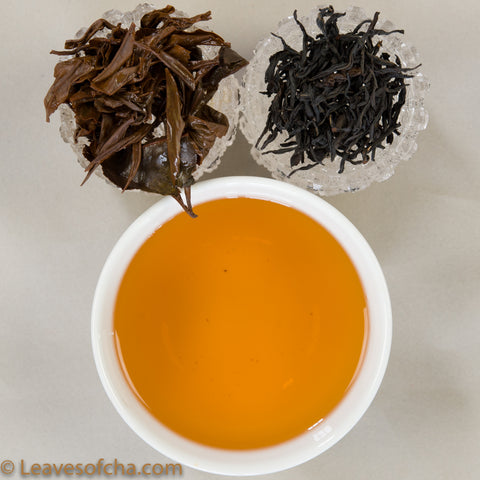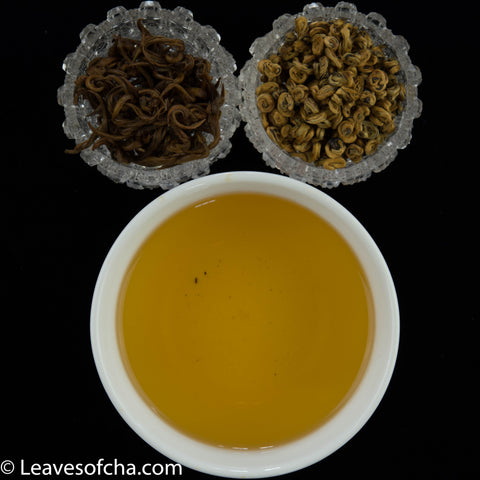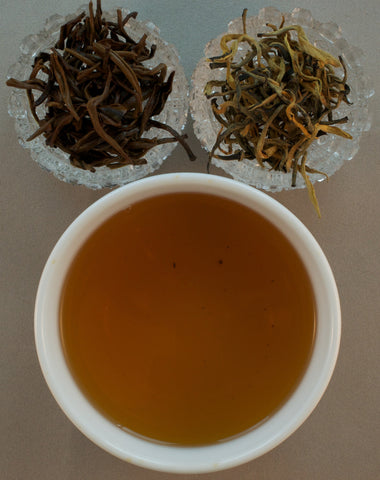This is a bud-only Dian Hong, which sets it apart from its equally tasty leaf-based Yunnan cousins. If you haven’t tried a bud-based Yunnan tea yet, you are in for a treat!
The low chlorophyll and rich antioxidant content in the newly flushing buds contribute to the golden color of the tea. The fuzz, or down, that can still be seen on some of the buds attests to the careful plucking by the pickers and processing by the tea maker.
Provenance:
-
Origin: Bai Ying, Yunnan, Lin Cang area, China
-
Grower/Teamaster: Bi Wen Lin
-
Harvest Date: April 2018
-
Cultivar: Yunnan Big Leaves Tea Tree (Da Ye?)
-
Cultivation: Natural (Organic, no cert.)
-
Plucking Standard: Bud only
-
Processing Notes: Many of these buds have multiple leaves curled up inside them and the teamaster must carefully control oxidation to ensure these leaves oxidize evenly. The leaves are withered on bamboo trays, then fried, wrapped in cotton fabric and further dried in wood boxes while continuing to oxidize. The teamaster constantly monitors the tea until the aroma and taste are perfect.
-
Nickname: Golden Buds. This is a Dian Hong, or “heavenly” black (dian being an old nickname for Yunnan)3
-
History/Pedigree: Yunnan Black Tea has only been produced since the 1930’s, and bud-only Jin Ya since the ‘60’s.
Brewing Suggestions1:
-
Water: 190-200˚F
-
Tea: 2g per 4oz of water (about a level 2 tsp2)
-
Infusion: 3-5 minutes, multiple infusions possible
Tasting Notes:
- Cacao notes and aroma in a sweet, smooth, delicate dian hong with virtually no astringency
1 Brewing suggestions are just that. Try it the suggested way then experiment. Infusions in the lower end of the time range allows for multiple infusions. See what you like. You can also experiment with temperature as this tea can handle water temperatures up to the boil. Some tea drinkers like to use slightly hotter and longer times for each subsequent infusion.
2 Weighing your tea is always the best way to control your dosage. I provide approximate volume measures for convenience but they can be problematic due to the variance in tea leaf shape and size. It’s best to use the single appropriate volume measure for the tea, i.e., don’t try to measure 1.5TB using two spoons meant to measure 1 TB and a ½ TB. Use an actual 1.5 TB measuring spoon. Yes, they make them! I like the oblong ones to handle longer leaf styles.
3 James Norwood Pratt. Tea Dictionary. Tea Society Press 2010.



